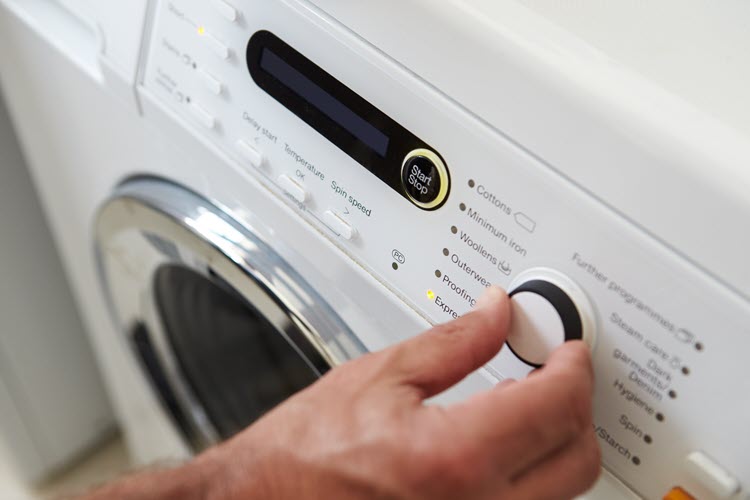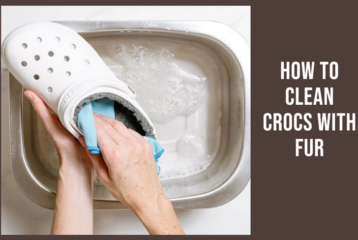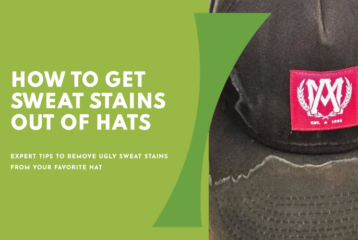Modern washing machines have a variety of settings designed to allow you to choose the right setting for any fabric. But it isn’t always clear what each setting really means.
If you have ever wondered whether you are choosing the right soil level on your washer, you are not alone.
So what does soil level mean on a washer?
Find out what it really means and how you can use it to choose the best wash for your laundry.
In This Article
What Does Soil Level Mean on a Washer?
The soil level on your washer refers to the amount of dirt in your clothes. It tells the washer how hard it needs to work to clean your clothes. The soil level also determines the length of time for the wash cycle.
Clothes washed on the light setting will wash quicker than clothes on the medium to heavy soil levels.
How Does Soil Level Work?
The soil level tells your washer how long the clothes need to be washed to clean them. The soil level also determines how much detergent is dispensed in the wash cycle in models with automatic detergent dispensers.
What are the Benefits of Soil Level Settings?
Soil levels on your washer allow you to choose the right setting for your clothes, as not all clothes need vigorous washing. Because the soil setting determines the length of the wash (and the amount of detergent dispensed in machines with automatic dispensers), using the proper setting means your clothes will receive the care they need.
Using the lowest soil level needed for your clothing means less wear and tear and will keep them looking good longer.
Choosing a lower soil level, when appropriate, also saves energy as the wash cycle will be shorter.
Which Soil Level Should I Use?
Soil level refers to the amount of dirt in your clothes, but the type of fabric you are washing is also a factor in choosing the right soil level. Heavy clothing requires a more vigorous wash to remove dirt and grime, while lighter clothing typically washes easily and doesn’t usually require a longer wash of a heavy soil level.
- Light Setting: The light setting is ideal for delicate fabric like underwear, intimate wear, and dressy shirts. It is also great for freshening up clothes that have been in storage or have hung in your closet for months. Choose the light soil setting on your washer for unworn items that need to be freshened or lightly worn clothes.
- Medium Setting: The medium soil level is a great choice for most clothing. This is for clothes soiled with moderate amounts of dirt or dust, like everyday jeans and shirts. It is also appropriate for sheets, bedding, towels, and other items with minimal stains.
- Heavy Setting: The heavy soil cycle is for clothes covered in mud or dirt — like Junior’s ball uniforms. It is a good choice for work clothes. It is also a good option for heavily soiled blankets, throw rugs, pet blankets and pet toys, or other heavily-soiled items.
Are Wash Cycles the Same as Soil Levels?
Wash cycles like delicate, normal, and heavy-duty refer to the durability of the fabrics being washed. You should choose the wash cycle based on the material and then select the soil cycle based on how dirty that fabric is. The soil level is separate from the wash cycle.
In some washing machines selecting the wash cycle for the fabric automatically controls the water temperature, washing speed and spinning speed, and the amount of time for the wash cycles. You may need to set the water temperature and speed in others.
Is Soil Level the Same as Water Level?
The soil level determines the length of the wash and the amount of detergent dispensed in machines with automatic detergent dispensers. It does not affect the amount of water in a load of wash.
The water cycle level determines how much water is used in the wash and is independent of the soil level indicator.
Does Soil Level Add More Water?
The soil level selection determines the length of the wash cycle. In washers with automatic detergent dispensers, the soil level also determines the amount of detergent dispensed. The soil level selection does not affect the amount of water in a wash load.
The water level selection determines the amount of water dispensed into the washer and must be set separately.
Do You Need to Use Hot Water for Heavily Soiled Clothes?
Both washing machine technology and laundry detergents have changed in the past 10 to 15 years, making using hot water for your laundry unnecessary, says Consumer Reports. Nearly all detergents work equally as well in cold water.
However, hot water and bleach are recommended for towels and bedding if someone is sick in the family. Likewise, soiled cloth diapers and clothing contaminated with bacteria should be washed in hot water and bleach to kill the bacteria.
Dish towels, dishcloths, and aprons, especially when used while handling meats or poultry, are also best washed in hot water to kill any germs and bacteria.
Using cold water in your washer saves energy, too. According to The American Cleaning Institute (ACI), 90 percent of the energy cost of running your washer is due to heating the water.
Frequently Asked Questions
Final Thoughts on What Soil Level Means on a Washer
So to recap, what does soil level mean on a washer?
Soil level is the level of dirt on an item of clothing. Adjusting the soil level on your washing machine determines how hard it needs to work to clean those soiled clothes.
Choosing the right soil level for your laundry is essential for cleaning your clothes while prolonging the garments’ life. Selecting the lowest soil level needed is recommended.
Remember, the light soil setting is great for lightly worn garments or clothes that have been in storage. The medium soil setting works well for everyday clothes, while the heavy soil setting is best for clothes with a lot of dirt or debris — like sports uniforms, kids’ play clothes, and work clothes.
Pro Tip: if your washer cleaning clothes as effectively as it used to, try finding and cleaning the debris filter.






